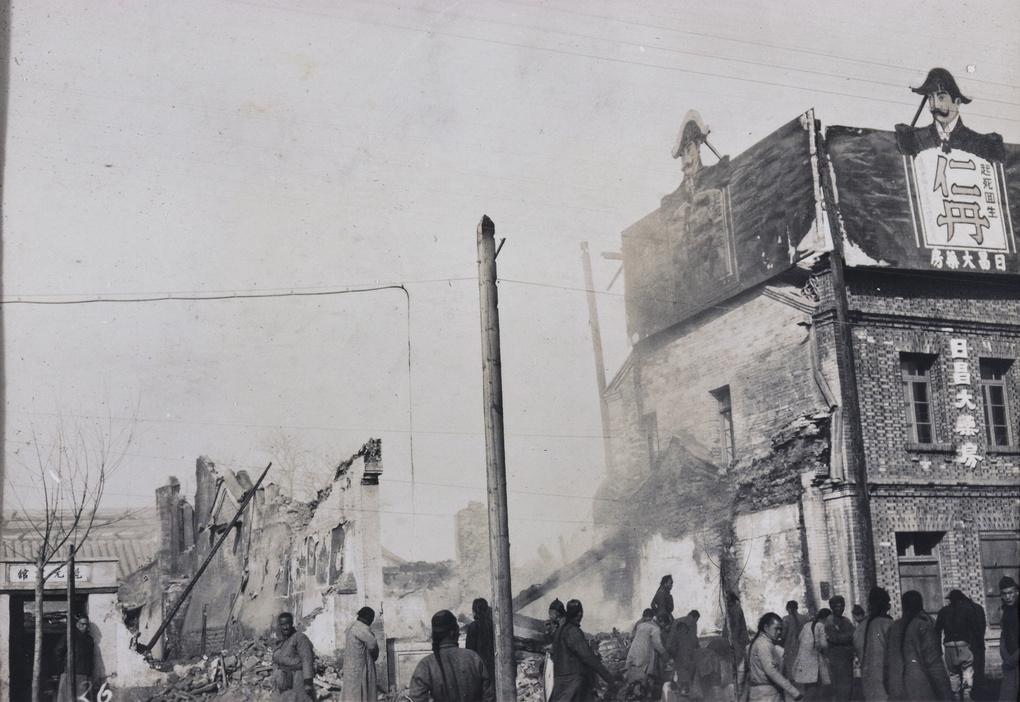Ruins of buildings near Dongdan Pailou and advertisement for Jintan (仁丹), after riots, Peking Mutiny 1912

Collection
Identifier
OH01-082
Notes
University of Bristol - Historical Photographs of China reference number: OH01-082. The Peking Mutiny (Ch: 北京兵变; pinyin: Beijing bingbian) erupted on the night of 29 February 1912. Rumours of Yuan Shi-kai’s move to Nanjing as a concession to southern republicans, on top of long-standing problems of indiscipline among soldiers in Peking, triggered the insurrection. The upheaval was followed by widespread looting. Only the intervention of the turbaned soldiers of the old Manchu loyalist, General Chiang Kuei-ti (Ch: 蒋桂题;pinyin: Jiang Guiti; other: Chiang Kwei-ti), in early March brought the situation under control. (See EP Young, ‘Yuan Shih-k’ai’s Rise to the Presidency’ in M Wright (ed.), China in Revolution: The First Phase, 1900-1913 (New Haven, 1968), pp 438-42). A similar image was published on a post card entitled “Near the Tung tan Pai lo, Peking shawing buildings burned by the looters in the evening of Feb, 29th, 1912”. The post card is reproduced in 'Old Beijing – Postcards from the Imperial City' by Felicitas Titus (Tuttle, 2012). The advertisement hoardings are for Jintan (仁丹) 'Admiral' silver-coated round pills, marketed in China from 1908 by Morishita & Co Apothecary, Osaka, Japan, as a cure-all for various ailments including halitosis.
Caption in album or on mount
26





